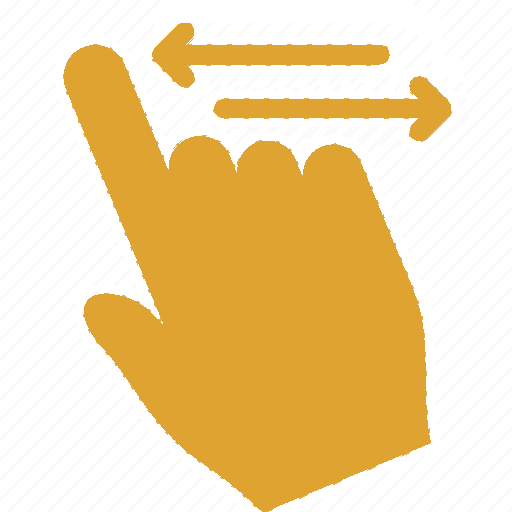This article is a detailed guide on how to get funded by a prop firm and trade over $100,000 without risking your own capital. So if you want to trade at a high level, the tips and steps in this guide will be very helpful.
Let's get started.
Content
What is a prop firm
How does prop trading work
Modern trading issues
How to get funded
Funding requirements
Pros and Cons
Summary
What is a prop firm?
A prop firm is a company that provides funding to traders who have shown good, consistent results. In return, the prop company receives a portion of the generated profit, and the payout can reach up to 100% in favor of the trader. This depends on the skills and generated profit, as well as the conditions of the respective prop company.
At their core, prop firms operate based on a business model in which they distribute a portion of their capital to individual traders, known as prop traders. These traders use their given capital to trade in various financial markets including Forex, stocks, commodities, etc.
In other words, prop firms are looking for capable traders who can manage their funds.

How does prop trading work?
Before the proprietary trading firm will provide you with trading capital, you must meet several conditions. These conditions vary by company but are generally quite standardized. Typically, there is a test period you must complete while adhering to the trading terms. Each firm has its own specific trading conditions, which you need to understand before beginning the evaluation phase. Once you pass the test, you receive trading capital and become a 'funded trader'.
Yes, it’s that simple! Continue reading to learn how to avoid common pitfalls and increase your chance of passing the evaluation phase.
As I mentioned, the first phase involves demonstrating your trading skills and ability to make a profit. This phase is commonly known as the 'Challenge'. During this phase, trading must adhere to money management rules, and you must achieve a specific percentage gain within a set timeframe. Given the difficulty of meeting this time-based condition and the intense competition between prop firms, many companies have recently decided to extend or eliminate the timeframe. This means you no longer have a fixed period to complete the Challenge.
For example, a prop firm may require a 10% return in 30 days while not allowing more than a 5% loss. After successfully passing the Challenge, the prop firm funds the trader, although some firms may request an additional testing period.
After receiving the funded account, the trader should continue to follow the same rules as during the Challenge. If the trader maintains good performance, profits are split between the prop firm and the trader. Profit-sharing policies vary significantly between companies, but most prop firms offer traders over 80% of the profits. In some cases, traders may receive 100% of the realized profit and even be paid a salary.
Before the evaluation begins, you must select a capital amount that you will trade with if you pass. Different prop firms offer varying trading amounts, sometimes up to $1,000,000. To start a Challenge with a chosen amount, you need to pay a fee, which most companies refund after you pass the challenge or make your first withdrawal. The fees, or 'Challenge prices,' vary between firms but typically are around $500 for every $100,000 of trading capital.
In summary, you pay $500, pass the Challenge, receive $100,000, and start trading.
Modern trading issues
I won't delve into strategies, indicators, and brokers here. With over 12 years of experience in trading the financial markets, I can clearly outline the challenges people encounter. Trading techniques are secondary to the more crucial aspects of trading, which include:
- Lack of time - the issue of time isn't as significant as you might think. Consider the analogy with sports: most people have a few minutes each day they could dedicate to exercise, but they don't, and then they claim they don't have time. The same applies to trading; the problem lies not in the lack of time but in the lack of organization. If you organize your day properly, you'll find time for everything.;
- Lack of capital - up to now, it has been a challenge because regardless of what is said, trading with $100 - $200 doesn’t feel substantial enough. However, it’s a positive beginning from a psychological standpoint. Moreover, the rules of trading remain consistent whether you're dealing with a small account or a large one. With prop firms now in the market, accessing capital has become much easier. One of the most frequent excuses I hear from students is 'It would be different if I had $100,000' — well, here’s your chance!;
- Lack of knowledge - since 2015, we've been sharing valuable content on social networks. Since 2018, we've provided daily video trading analysis in a private Telegram group. Additionally, we manage a free Telegram channel. We've developed a comprehensive beginner training program that offers a solid introduction to the financial markets, entirely free of charge. Furthermore, we offer a mentoring program that includes over 600 video tutorials and more than 4,000 minutes of content, along with one year of access to daily trading analyses. Our resources ensure that knowledge is readily accessible.
With capital and knowledge no longer being obstacles, the next consideration is finding the time.
How to get funded and become a prop trader?
Anyone can get trading capital and become a prop trader if they pass the evaluation phase. Prop traders need to prove their skills and that's what the Challenge is all about.
Here are the steps we think you should follow to become a prop trader:
- Training and mentoring - before investing in a Challenge and aiming for substantial profits, it’s essential to learn the basics of trading. We can support you best in this journey, as we have been teaching at Trendline since 2015 and have years of experience conducting lectures and seminars for various brokers. Begin by mastering the fundamentals of trading: open a demo account, test basic strategies, and familiarize yourself with the trading platform. Experiment with different trading styles while using the demo account, as there's no financial risk involved. Once comfortable, progress to more advanced strategies, incorporate indicators (even though we trade without them, it’s beneficial for beginners to understand their limited usefulness), and adhere to money management rules—the most crucial aspect of trading;
- Live account - the next step is to open a small live account with a broker of your choice (not a proprietary firm) to apply what you've learned in a real trading environment and become accustomed to the psychological aspects of trading. Unfortunately, the excitement and pressure of real trading can only be felt on a live account. We are here to support you through every stage, including developing a personalized trading strategy that aligns with your goals and trading style;
- Choose a Prop firm - a few steps can guide you in selecting the right prop firm. Start by reviewing comments and experiences shared by other traders, especially those who have passed the Challenge and received funding. Consider how long the firm has been funding traders, how much profit they have paid out, and if they have a history of payouts at all. Trust and history are key factors. Next, evaluate the firm's conditions in relation to your trading style. Some firms may be better suited to your approach, while others may make it difficult for you to pass the test period with your current trading methods.
Funding requirements
Competition among prop firms offering trading capital is on the rise. This is excellent news for traders, as it leads to better conditions for securing funding.
However, the duration of these favorable terms is uncertain, so it's wise to seize the opportunities available now.
Here are the current typical terms offered by most prop companies:

| Step 1 | Step 2 | Step 3 |
|---|---|---|---|
| Challenge | Verification | Funding |
Trading days | Unlimited | Unlimited | Unlimited |
Period | Unlimited | Unlimited | Unlimited |
Maximum daily loss | 5% | 5% | 5% |
Maximum loss | 10% | 10% | 10% |
Target | 10% | 5% | Unlimited |
Fee | Depending on the acc size | No fee | Fully refundable |
Pros and Cons of Prop trading
The funding you receive after passing the Challenge comes with advantages, but there are also some disadvantages. You should keep them in mind regardless of account size, experience you have, or the instruments you trade.
- Large capital - the main advantage of prop trading is access to large capital meaning the ability to trade with $100,000, $200,000, and even $1,000,000;
- Low risk - you face no risk of losing your own capital; your only risk is the Challenge fee. For instance, if you receive $100,000 in funding and incur losses, you are not responsible for covering those losses. Typically, there is a maximum allowable loss limit, usually around 10%. If this threshold is reached, the contract will simply be terminated;
- Higher profits - trading with amounts exceeding $100,000 enables the potential for substantial earnings. Prop firms typically share the majority of the realized profits with the trader.
In this case, trading $100,000 - $200,000, risking no loss of equity, and taking 90% of the profit (and maybe more) seems a pretty tempting proposition. However, it is good to pay attention to the disadvantages of prop trading.
- Limitations - If you're accustomed to trading without strict rules, taking significant risks, or experiencing large losses or gains, prop companies will not offer you this flexibility. Trading with prop firms requires adherence to specific rules, and violating any of these rules can result in contract termination. For example, the maximum daily loss limit may be lower than what you're used to risking under normal circumstances;
- Time pressure - You are required to achieve specific results within a set period. This can create additional pressure and lower the likelihood of successfully passing the evaluation phase (challenge). As I mentioned earlier, some prop firms have removed the time condition, which is a welcome change for us - retail traders;
- Scams - It turns out that many prop companies, even after you successfully pass the test period, either do not provide the promised funding or, worse, fail to pay out your profits after you start trading with their capital. Another unethical practice includes sabotaging trading by manipulating market conditions, such as through false quotes, negative slippage, spread widening, and similar tactics.
Summary
The most important thing to know about prop firms is that they provide trading capital to traders in exchange for a % of the profits made. The capital is provided after payment of a fee and successful completion of an evaluation phase, also called ‘Challenge’.
During the Challenge, you have to trade according to strict rules set by the respective prop company. Before investing in a challenge, make sure you are familiar with the company's terms and conditions. Do not forget that there are incorrect practices and keep one thing in mind, if you are not sure about something, you can always contact us for assistance.
Ultimately, the purpose of prop trading is to allow retail traders to make money and improve their skills. It all depends on you and your trading skills. Don't worry if you don't pass the evaluation phase - you're not risking anything. Rely on your strategy and above all on proper risk management!
In essence, prop firms aim to bridge the gap between individual traders and the financial markets. By providing trading capital and a supportive environment, these firms allow retail traders to access the markets while reducing the costs and risks typically associated with trading.
The current opportunity for traders is promising, though its duration remains uncertain. There's a concern that regulatory intervention could potentially reduce or halt profits, similar to what occurred with cryptocurrencies—initial strong gains followed by a downturn. Nonetheless, the crucial point is that there's a viable opportunity at present to generate significant profits!
Best of luck!
Risk Warning: All products and services offered by "Forex Trendline" Ltd are for educational purposes only and do not constitute investment advice or a trading recommendation. Trading financial instruments carries a high level of risk and may result in losses. Past performance is not a guarantee of future success. We recommend that you read the full Terms and Conditions before using our services. Nothing on this site should be interpreted as investment advice from "Forex Trendline" Ltd or any of its representatives, directors, or employees.
© 2025 Trendline. All rights reserved

